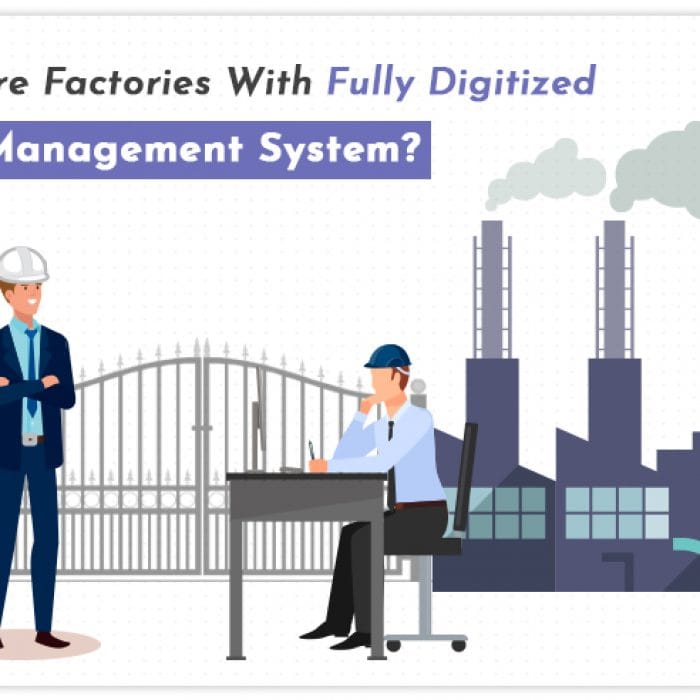
Enhance Visitor Check-in Process with the Power of Static QR Codes
We all get impatient and want to check in as fast as possible, when it comes to visiting a shopping mall, a hotel lobby, an event or be it an office.
A five-minute wait at check-in leads to nearly a 50% decrease in guest satisfaction ratings. However, a computerized visitor check-in process raises average guest satisfaction ratings by 7%.
Imagine you arrive at a busy workplace and are greeted by a straightforward QR code. You now don’t need to wait in a long queue at the front desk nor must you complete any written documentation. A simple scan of the QR Code with your mobile device lets you complete the check-in process and proceed further.
Introducing the integration of static QR codes! This innovative technology has the potential to revolutionize visitor management by streamlining the entire process, delivering a seamless, efficient, and effortless experience.
In this blog post we will discuss how introducing static QR codes can revolutionize your visitor check-in process and eliminate the challenges that organizations face. This will result in time savings, increased security, and enhanced productivity.
Navigating Front Desk Security Challenges
Modern organizations face many challenges. Due to economic constraints, many are now obliged to operate with restricted resources, which are made worse by tighter budgets.
The front desk is essential to preserving productivity and security at work. However, front desk security is the primary challenge that most of the organizations experience, and the consequence is smaller and decentralized offices. These digital and physical security threats further disturb the entire office environment.
The issues of front desk security cannot be sufficiently addressed by using traditional visitor management techniques such as handwritten sign-in forms, register books, etc.
Let’s unveil some hurdles businesses experience with the front desk. These include:
- Dispersed office layouts
- Issues with compliance
- Reception desks without any employee
- Shattered perception of the workplace
- Additional security breaches
- Manual procedure and waiting
So, to address these complicated challenges, organizations across the globe are adopting an innovative solution: implementing static QR codes, because manual or paper-based options are no longer viable in today’s dynamic business environment.
How QR Codes Improve Visitor Experiences?
The visitor check-in process must be quick, easy, and safe. Once developed, QR codes can be placed in key areas, such as the lobby or entrance, so visitors can quickly scan them with their smartphones.
By doing this, the visitor is redirected to a sign-in page where they can register their visit without having to make any physical contact. This expedites the procedure and lessens the need for reception employees to manually enter data.
Static QR codes may completely transform your visitor management process. Below are the aspects on how using static QR codes can improve the entire visitor check-in process:
-
Improves the experience of visitors
Manual procedures can take a long time when greeting guests. QR code scanning helps to reduce wait times, free up reception rooms, and allow touchless check-ins without compromising security. By utilizing this system, you can circumvent lengthy queues and enjoy a more tranquil environment.
-
Allows for safe virtual front desks
Is the front customer service desk empty? Not an issue!
Even at places without staffed reception desks, guests can safely check in by scanning a QR code. This ensures that all required security and compliance procedures are completed before they enter the premises. It not only makes the sign-in process quick and easy but also supports the execution of digital NDAs and other pre-visit obligations.
-
Effortless guest-tracking for security
With the implementation of QR codes in your organization, you will be able to track the following details:
- The time and date of the arrival and departure
- Number of distinct visitors
- The scanning apparatus
- From where the person is scanning the QR Code
- Creating leads and running successful campaigns
Generally, every piece of information you receive from QR Codes can be an essential source of leads for your company.
QR Code retargeting is an excellent technique to warm up prospects acquired through check-ins.
For example, you may plan an organizational event related to a specific domain and allow guests to check in using a QR code. When visitors scan the QR Code, numerous details are recorded, including the type of device used, the location, the number of distinct visitors, the date and time of entry, and more. By analyzing this data, you may re-engage your audience using Facebook and Google Ads.
-
Aids in keeping compliance
Static QR codes simplify adhering to legal requirements. With each sign-in, you get a precise and searchable record of all visitor data. They also simplify granting authorized users and customized access, even without front desk employees.
Guests can use their phones to complete the sign-in process, and access control credentials are only granted once the information is verified. QR codes integrated with a visitor management system (VMS) can assist businesses in adhering to privacy rules by anonymizing visitor data and limiting access to specific administrators.
-
Finds additional workplace knowledge
Every QR code sign-in is recorded, giving real-time information on who is entering and leaving the premises. Businesses can use this data to determine the number of refused entries, average visit durations, peak visit periods, and frequently visited workplace areas.
You can monitor occupancy levels in real-time with this information, making it simpler to adjust to changing visitor numbers and comply with capacity restrictions. These findings can also help with better business planning, which will improve workplace security and visitor experience even further.
-
Minimize Operational Cost
Operating costs frequently impact the bottom line of an organization. Maintaining visitor pleasure while controlling operating costs can be achieved with the use of a QR Code during check-in:
- Implementing QR codes in reception areas, hotel rooms, spa lounges, office receptions etc., can eliminate paper-based check-ins and save labor costs.
- Integrating QR codes can automate routine processes such as ordering takeout, booking reservations for restaurants, room service, and much more.
Implementing Static QR Code in Visitor Management Systems
QR codes are one of the useful tools for businesses looking to cut expenses and get a deeper knowledge of the dynamics at work. They are easy to implement and provide real-time visitor data administration and monitoring once they are incorporated into current visitor management systems.
In addition to streamlining administrative work, this integration offers priceless insights into visitor patterns and facility occupancy.
Is your workplace security continuing to grow in complexity? Then leverage the power of static QR Codes to change your visitor management procedure and redefine enterprise safety and security with the help of piLOBI’s visitor check-in software. This platform is your gateway to a more seamless visitor experience.
Final Takeaway
Indeed, a quick fix that can shorten wait times and free you up to concentrate on providing each guest with a customized check-in experience is the use of a QR Code. Static QR codes provide a smooth, modern solution by streamlining the entire visitor management process. With a brief scan, you can guarantee easy check-ins, secure data processing, and effective tracking, keeping your business competitive in this digital era. Thus, enjoy the advantages of a quicker, safer, and more intelligent check-in process by embracing the future of visitor control with static QR codes.





